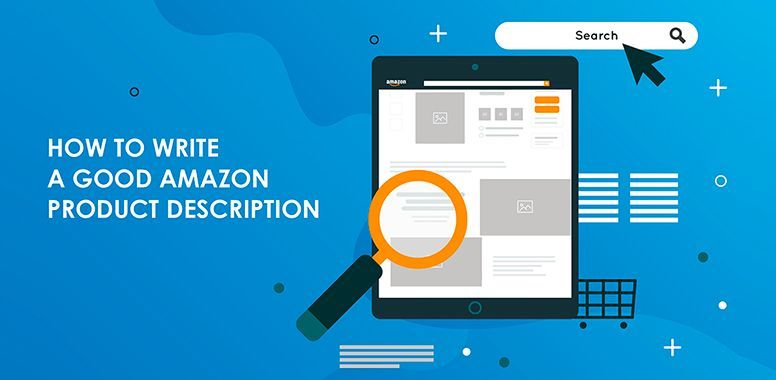Beyond the Buy Box: 7 Creative Ways to Increase Repeat Purchases on Amazon
Winning the Buy Box is only the first step in building a successful brand on Amazon. For many sellers, capturing that initial sale feels like the pinnacle of strategy—after all, the Buy Box drives over 80% of purchases. But what happens after the first click?
Amazon is not just a platform for acquiring new customers—it’s also a marketplace where cultivating loyalty, brand affinity, and repeat purchases can compound your growth far beyond one-off conversions. Repeat customers spend more, trust your brand more, and ultimately cost you less to retain than constantly chasing new buyers.
In this post, we’ll explore 7 creative ways to increase repeat purchases on Amazon, helping you move from transaction-driven sales to building long-term, loyal brand advocates.
1. Build a Brand Store That Converts Into a Destination
Your Amazon Brand Store is more than a catalog—it’s your brand’s home base. Too often, sellers treat it as a secondary landing page. But with the right design, it becomes a destination customers return to.
- Use lifestyle imagery to tell a story.
- Organize categories for easy navigation—like “Shop by Need” or “Best for Beginners.”
- Showcase bundles, seasonal collections, or limited editions.
By creating a store that feels like a curated shop, you encourage buyers to return for discovery, not just a single purchase.
2. Leverage Subscribe & Save Beyond Consumables
Many sellers assume Subscribe & Save is only for CPG (consumables like supplements or coffee). But buyers subscribe for convenience, not just replenishment. If your product has predictable replacement cycles (filters, accessories, even workout gear), enrolling in Subscribe & Save locks customers into recurring orders.
Add subtle cues in your copy: “Perfect for monthly restock” or “Stay stocked year-round with Subscribe & Save.” This shifts the customer mindset from one-off purchase to ongoing relationship.
3. Win the Post-Purchase Experience With Packaging Inserts
Amazon limits how sellers can communicate post-purchase, but packaging inserts remain a powerful tool. Done correctly, they:
- Provide helpful usage or care instructions (increasing satisfaction).
- Share your brand story in a way listings can’t.
- Direct buyers to warranty registration or VIP clubs (compliant, value-driven).
The insert is your chance to say, “You’re part of something bigger than just this transaction.” That emotional connection drives retention.
4. Bundle Creatively to Build Repeat Habits
Bundles aren’t just for increasing AOV—they can also drive repeat purchases. Consider:
- Starter bundles that introduce your brand’s ecosystem of products.
- Replenishment bundles that anticipate customer needs in 30- or 60-day cycles.
- Cross-sell bundles that expose buyers to complementary SKUs they might not have discovered.
When buyers get value beyond what they expected, they return. Bundling trains customers to think of your brand as the one-stop solution.
5. Harness Reviews and Q&A as Retention Tools
Reviews aren’t only about conversion—they’re also about community building. Customers who see an active brand answering Q&As and thanking reviewers feel more connected.
- Publicly address questions with helpful, detailed answers.
- Acknowledge feedback and show you’re improving based on reviews.
- Encourage customers to check back for updated versions or new launches.
Shoppers notice brands that engage, and when they feel heard, they’re far more likely to buy again.
6. Use Sponsored Display to Retarget Existing Buyers
Amazon’s Sponsored Display ads aren’t just for conquesting competitors. You can retarget your own customers with relevant promotions.
Imagine a buyer who purchased your water filter—30 days later, they see your Sponsored Display ad for replacement filters. That gentle nudge keeps them in your ecosystem.
Retargeting also works for new launches. Buyers who already trust your brand are the most likely to try your latest product line, making repeat purchases the default outcome.
7. Create a Premium Content Ecosystem (A+ & Video)
Finally, go beyond static product listings. Premium A+ Content and videos deepen engagement and remind customers why your brand is different.
- Use “how-to” videos that keep customers returning to your listings as resources.
- Highlight brand values, sustainability, or innovation to build emotional loyalty.
- Showcase product families in A+ modules, making it easy to cross-sell.
Content isn’t just about conversion at the point of sale—it’s about staying top-of-mind. A customer who remembers your story is a customer who comes back.
The Bottom Line
Repeat purchases on Amazon don’t happen by accident. They’re the result of deliberate strategies that extend beyond winning the Buy Box. By building brand destinations, leveraging subscription tools, enriching the post-purchase experience, and retargeting buyers with ads and content, you transform Amazon from a transactional channel into a long-term growth engine.
From Transaction to Transformation:
Partner With Experts Who Drive Amazon Retention
At Chief Marketplace Officer, we don’t just optimize for the Buy Box—we design strategies that maximize customer lifetime value.
Our team of Amazon specialists:
- Builds
Brand Stores, A+ modules, and video assets that turn shoppers into repeat buyers.
- Implements
retargeting and Sponsored Display campaigns that keep your brand top-of-mind.
- Crafts
keyword-optimized listings and copy frameworks to capture both first-time and repeat purchase intent.
- Designs
bundle, subscription, and packaging insert strategies that build loyalty while staying compliant.
Amazon sellers don’t just need more sales—they need customers who come back again and again. That’s where we come in.
Ready to Build Loyalty That Lasts?
👉 [Book Your Strategy Call with CMO Now]


